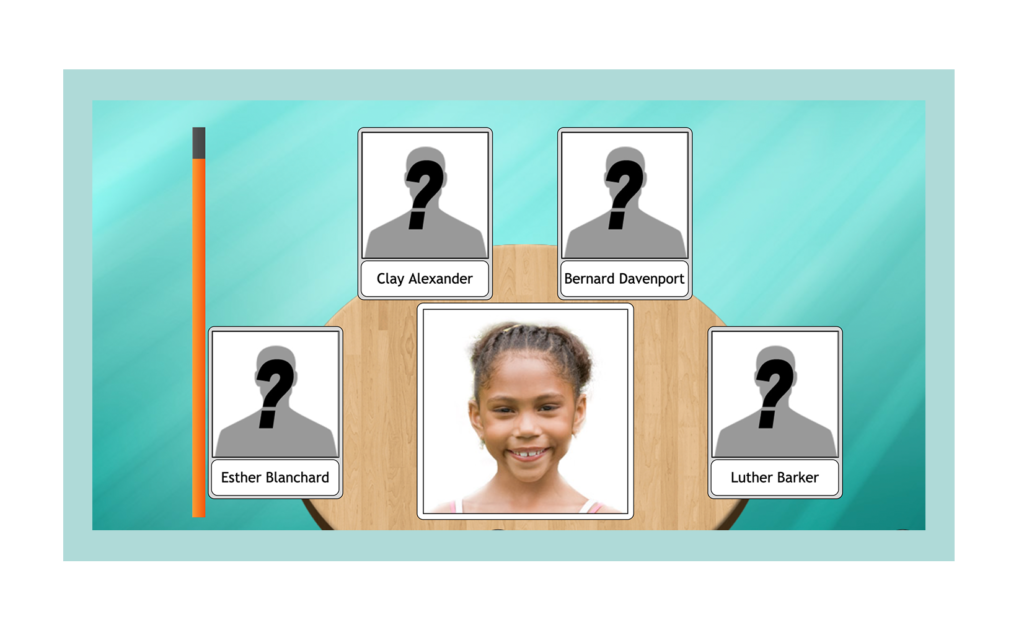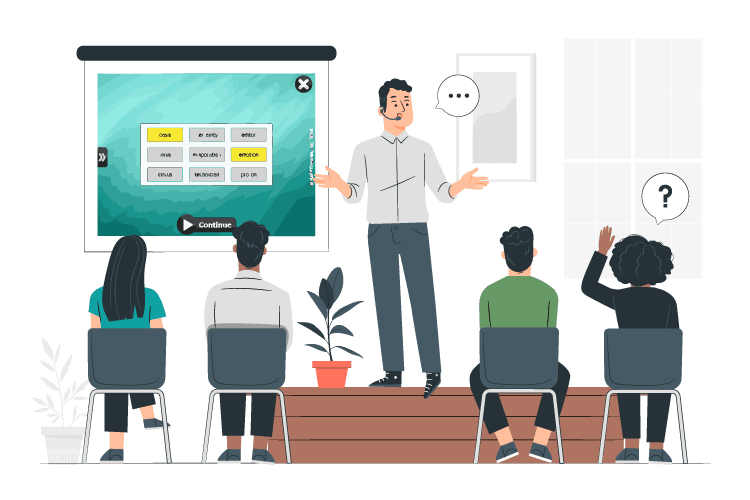
Digital tools like HappyNeuron Pro provide a platform to practice cognitive skills. However, you have to help your patients understand the purpose of their practice and how it transfers into everyday life for the practice to reap benefits.
The transfer of skills from one setting into another is called generalization.
Bridging refers to the process that fosters behavior change following cognitive intervention. Bridging activities aim to achieve generalization, and it can be successfully implemented with guidance from a therapist.
With HappyNeuron Pro, you can select exercises for your patients to perform at home and in the clinic based on their therapy goals. For example, your patient may tell you: “I have trouble remembering faces and names. It’s hard for me to go to family events because I get distracted and overwhelmed seeing people because I don’t remember their names or things about them”.
This patient is describing deficits in executive function, visual and auditory memory, and attention. HappyNeuron Pro offers exercises that target these areas. A sample workout plan from HappyNeuron Pro that can be used to improve these cognitive skills would include exercises such as I Remember You!, Gulf Stream, You’ve Got Voicemail!, Hurray for Change!, An American in Paris, and Two-Timing. This is an example of a short workout plan. However, HappyNeuron Pro offers a variety of exercises that you can use with patients to target various domains of cognition.

When using HappyNeuron Pro, it is important that your client understands how to use the software so that they are compliant with exercises. Please take time to go over the instructions thoroughly. Further, practice some exercises with your client so they can get a feeling of how the program works. It is also critical to discuss and ensure a plan of access if you would like your client to do home training.
Once you have gone over instructions, a demonstration, and a plan of access, your client can complete exercises on their own. It is important to keep their goals in mind so that they understand why they are performing the exercises you assign to them. This also helps ensure compliance, as your client will have an understanding of the “light at the end of the tunnel” or the new behaviors they will be able to enact as their therapy progresses. When performing exercises, explicitly tell your client “This exercise targets this area of the brain, which will help you get better at your goal.” An explanation and connection to your client’s daily life will help them understand the purpose of the exercises they are performing and can offer motivation to continue working through problems with the end goal in mind.
In combination with cognitive training, it is important to have your client practice skills they are building with you in real-life. Do this by creating scenarios that align with your client’s therapeutic goals. You and your client can work on bridging one-on-one. However, bridging is often a group therapy practice. This way, group members can exchange ideas on how to solve real-world problems and other members can learn from successes and failures to find strategies that work for them. It is important to focus on identifying the strategies employed so that clients can define what these strategies are, reflect on them, and discuss them with a therapist and the other clients.

Bridging scenarios do not require any special equipment. You can complete bridging activities in a cost-effective way. Therapists can tailor bridging activities to specific goals that clients are working towards achieving.
A common problem many people have is with memory: correctly pairing names and faces together. In the real world, we are bombarded with names and faces of famous people, loved ones, neighbors, and strangers. For individuals struggling with cognitive impairment, the overload of these stimuli can cause them to mix up or forget information. This causes frustration when they have awkward social interactions or wish to interact with someone but feel rude for not correctly remembering who they are.
A bridging practice that can be done on a group or individual level is HappyNeuron Pro’s I Remember You!, where clients are tasked to remember the names and faces of people sitting at a table. Another exercise that can be done is Restaurant, where the user must remember the orders of people sitting at a table. I Remember You targets facial recognition and name pairing, while Restaurant requires spatial and verbal memory. We use both kinds of memory in order to recall who people are in daily life.
To create a social activity, you can create a fake party scenario with your group members where each person shares their name and their favorite color. Then, task each of your clients to remember the name and favorite color of their group members, and go over the strategies they employed to do so. Asking questions such as “What was the most challenging” and “how would you go about remembering these details in the future” will help clients reflect on their experiences and think about what they may try next time when they encounter these scenarios in the real world.
It is key to get creative with bridging scenarios so that clients are exposed to different situations and can practice employing strategies. For guidance on bridging, we recommend Alice Medalia and Chris Bowie’s Cognitive Remediation Guide to Improve Functional Outcomes .
Learn more:

Info Page Title 1

Info Page Title 2

Info Page Title 3
Pulling from our decades of experience in Cognitive Therapeutics, we aim to help you enrich your practice through the use of digital and paper tools.
Pricing + Offers


© 2023 HappyNeuron is a Product of Humans Matter